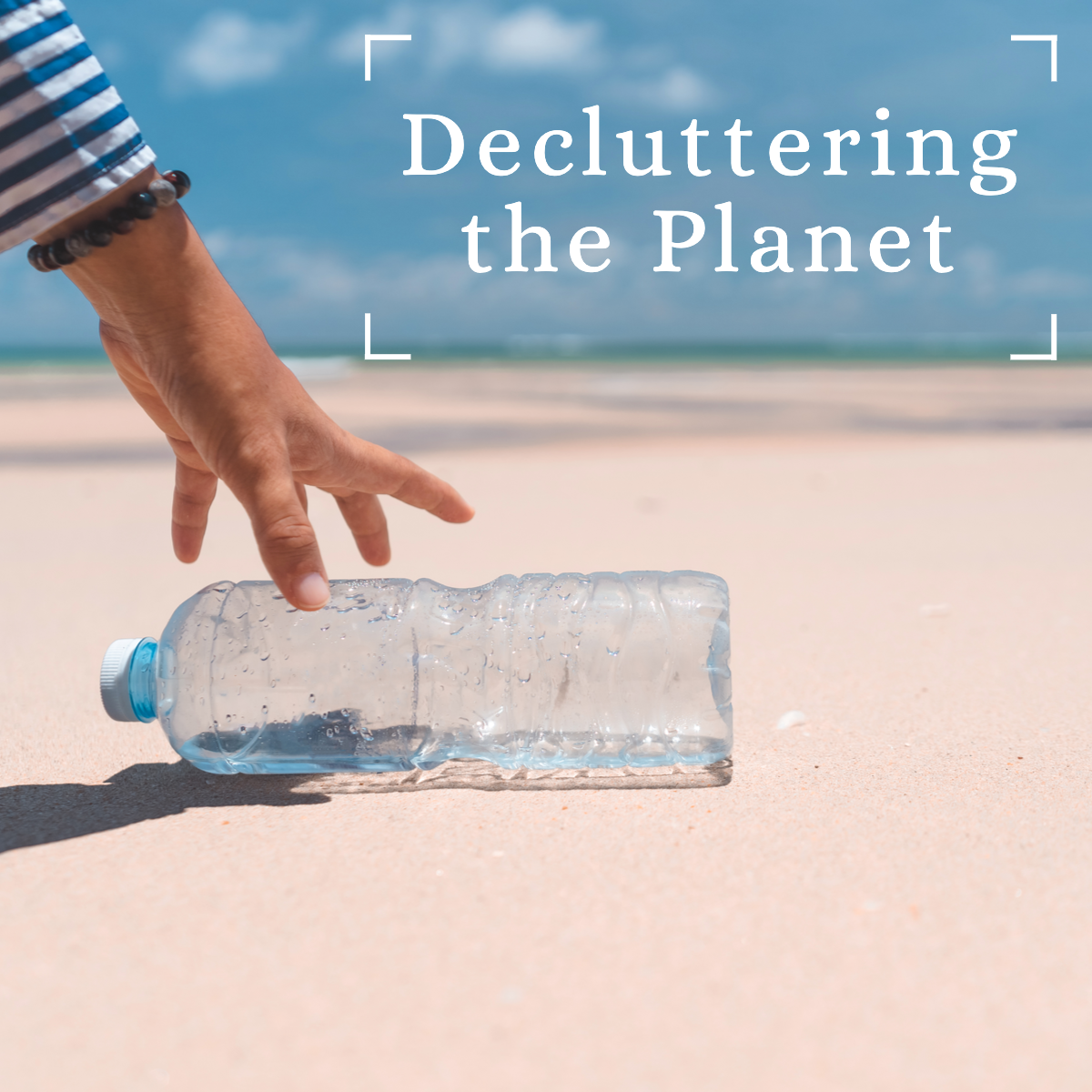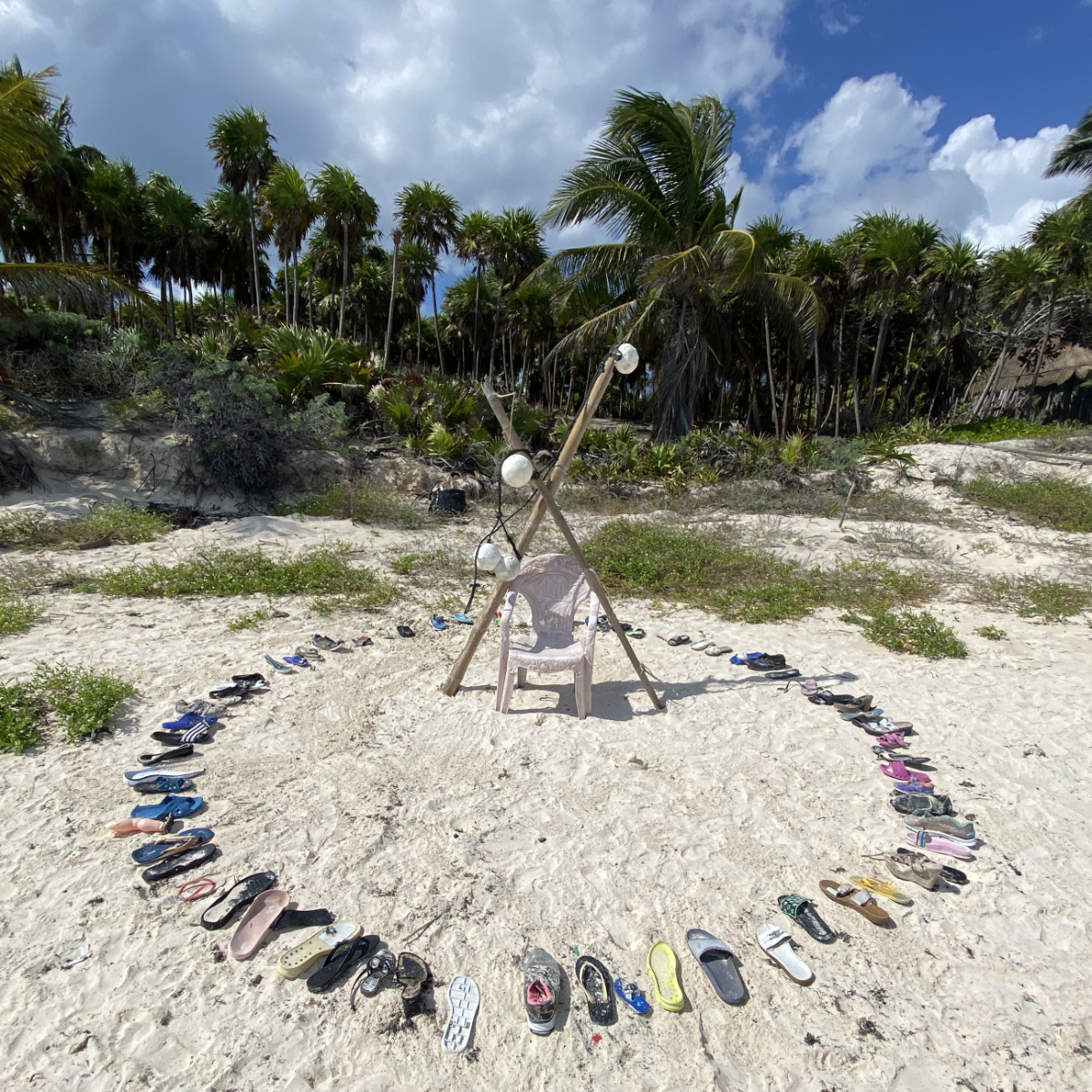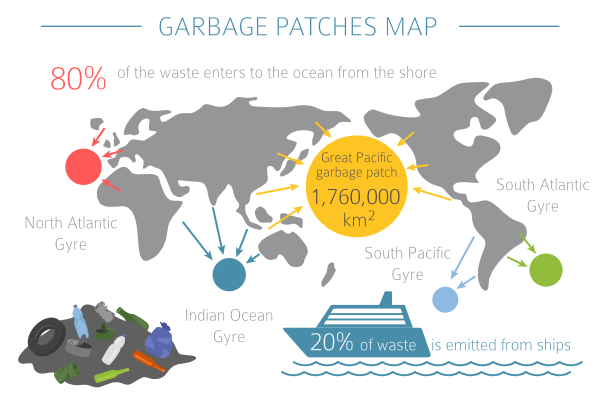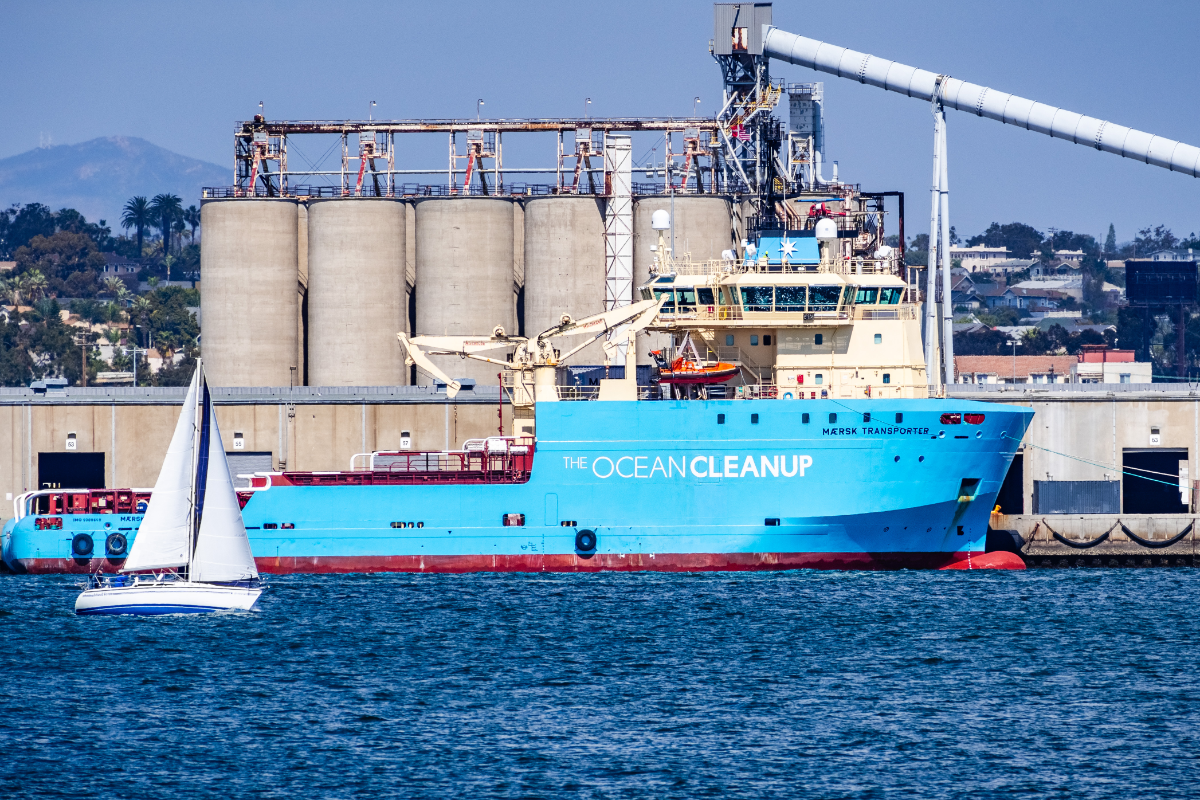
During our stay in Tulum Mexico last month, we took some time to walk the beach and enjoy the sounds of the ocean. The beach near the resorts were kept clean and clear of clutter. But as we wandered down the beach, we came to an unpopulated area where someone had set up a makeshift “shrine” to plastic garbage.

When we looked up the beach, all we could see tangled in with the seaweed was plastic.
It made me sad.
But there was something different to my melancholy this time. I used to feel powerless, hopeless at the sheer size of the problem that existed.
How can one person make a meaningful change? Can my attempts to reduce my use of single-use plastic and my recycling efforts really make a difference?
I will chalk it up to small-minded thinking because – change/impact CAN be made by one person AND it takes a village. We are all in this together and together I truly believe we can move mountains (or in this case, piles of rubbish).
Let me back up a bit.
The Five Gyres
Are you familiar with the five gyres? (pronounced jai·urz) A gyre is a large system of rotating ocean currents and across the globe there are five of them. (definition courtesy of NOAA) They are:
- the North Pacific Subtropical Gyre
- the South Pacific Subtropical Gyre
- the North Atlantic Subtropical Gyre
- the South Atlantic Subtropical Gyre
- the Indian Ocean Subtropical Gyre
These currents are responsible for collecting and amassing the garbage that ends up in the ocean. The size of this garbage ranges from large to micro-plastics. The organization 5 Gyres led the charge (at least for me) at raising awareness and advocating action through education.
I really recommend you read through some of these sites because it’s eye opening.
The Great Ocean Garbage Patches
Now before you think I’m just a total downer, hang in with me for a few more sections, okay? Have faith. I was sitting where you were sitting not too long ago. Depressed by this news. Powerless by the sheer enormity of it all. Overwhelmed and paralyzed. I get it. But let’s just finish setting the stage with this one last piece then we’ll get to the good stuff!

Though the Great Pacific garbage patch is large, and new ones are starting in other gyres, this isn’t as simple as sending out a trash trow. These floating islands of garbage move around with the currents and they include micro-plastics.
Let’s Talk Micro-Plastics
Just for a second, let’s talk about what micro-plastics are and why they matter. Even though we collectively focus on recycling plastics, most of them cannot be reused. These are called single-use plastic (think straws, takeout utensils). However, other plastics that purport to be recycled can only be reused a finite (and small) number of times before the molecular structures start to break down. And, most plastic is not recycled at all. So if plastic ends up in the ocean, it just breaks into smaller and smaller and smaller pieces – until they are micro-plastics basically indiscernible to the human eye. The problem is that they end up being ingested by sea creatures and we in turn eat the seafood and it ends up in us. Not good for anyone.
How Do We Fix This?
As you can see from the graphic above, most of the pollution in the ocean washes out from the shore. Don’t think of that as just beaches, but think about it flowing from land masses INTO the ocean. This is important because it sets up the steps we need to take, in order of impact, to start to really change what’s happening.
Step 1. Reduce
The mantra reduce, recycle, reuse caught on to engage citizens in behavior that could positively impact our environment. However, we can now see that the Recycle and Reuse pieces are flawed. We don’t recycle enough and since it never really goes away and it can (at best) only be reused a few times, the biggest impact we can have is to REDUCE our use of plastics.
Listen, I know it’s hard. I’ve been focused on whittling away my plastic use for years and there’s still boundless opportunity. My personal commitment is to always be mindful and look for easy ways to reduce it. This may be forgoing straws or using reusable metal ones, or it may be carrying reusable utensils in my lunch sack or it may be reusable shopping bags over single use plastic.
Step 2. Prevent/Collect
As I said before, while holy grail goal is to NOT use plastic if you don’t need to, if you do then please recycle it so it doesn’t end up in our water and food supply. For those of us who have easy access to recycling or garbage collection, simply use it. But be mindful of litter when you are at the beach or on a boat in a body of water. I can hardly believe it needs to be said but don’t dump garbage over the side or you’ve just added to the problem.
Now the great news here is, there is a really exciting project afoot to try to capture the worst offenders of oceanic plastic pollution at the source. These tend to be third world countries in part because of sheer volume and in part because of the lack of processing plants. #TeamSeas provides an easy way to engage and be part of the solution. This global campaign started last year to raise a whopping $30M dollars to remove 30M pounds of plastic and trash from the oceans. Theirs is a three pronged approach:
- Beach Clean Up – For beach clean up #TeamSeas partnered with The Ocean Conservancy to clean sensitive beaches. You can donate to them through #teamseas and you can volunteer for clean ups!
- River Clean Up – For this #TeamSeas partnered with The Ocean Cleanup using money to pay for interceptors that pull debris and garbage out of rivers that feed to the ocean – preventing the addition of trash and pollution into the seas.
- Ocean Clean Up – Now for #TeamSeas the ocean portion of their clean up is focused on ghost gear (discarded fishing gear) that can harm wildlife and comprises a big portion of the ocean pollution. For this they teamed up again with The Ocean Conservancy.
Now while all of this is hopeful and promising and proactive, there is nothing that fills me with more hope than the work being done with The Ocean Cleanup organization.
Step 3. Remove
While I’m happy to reduce and recycle, I was always plagued with the sense of – it doesn’t do anything for the mess we’ve collectively already made.
Thanks to the efforts of #TeamSeas, I started paying attention to the Interceptors™ (The Ocean Cleanup’s river cleanup technologies that collect trash before it can reach the ocean. The Ocean Cleanup has several Interceptors already deployed in some of the world’s most polluted rivers to catch plastic and trash upstream. The Ocean Cleanup takes aim at the 1% of rivers which contribute 80% of the trash flowing into the ocean from rivers.) and to The Ocean Cleanup.
I love that they are part of preventing the trash getting to the ocean, but I love even more that they are focused on removal. Removal feels the most hopeful of actually giving us a path out of this mess.
The Ocean Cleanup was founded in 2013 by a Dutch inventor, Boyan Slat when he was only 18!
Remember my comment about a single person making a difference?!
He conceived, built, and executed a system that allows plastic extraction with the very real possibility of removing nearly 90% of floating ocean plastic by 2040.

They have a four step process:
- Target – use technology to FIND the moveable trash.
- Capture – check out one of their videos, it’s fascinating! In fact, go subscribe to their channel and do a deep dive. It honestly made me feel so hopeful and empowered, it pushed me to write this blog in the first place!
- Extraction – pull it out of the ocean and sort it to both recycle and understand the source of pollution.
- Recycling – return the extracted trash into existing recycling streams in first world nations.
What Can You Do?
Donate. You can donate money to help fund these efforts. If you look on any of the linked sites, you will be able to find ways to give money. I encourage you to consider giving a donation as a “gift” in lieu of material goods for birthday or holidays.
Participate. This may be volunteering or it may just be taking action yourself to reduce your plastic usage where you can. Anything is better than nothing. Everything matters.
Educate. This is an easy topic to want to turn away from. It’s hard to pick what matters and what will get your finite energy and attention. But if you can talk about this with other people and share the good news, share the positive work being done around the world, maybe – just maybe – you will spur other people into action – and collectively we can turn this around!
Do you feel inspired to make changes?
If you’ll bear with me, I’m testing out products that will allow me to remove plastics out of my life (and maybe yours) with a minimum of fuss. But you know I won’t recommend something without testing it first. Some of my upcoming reviews will be related to this post.
As for micro-plastics – this is really one step to preventing the problem from getting worse. But keep your eyes out for more on micro-plastics in the news. This still remains a big challenge to tackle!